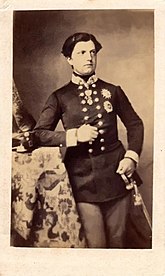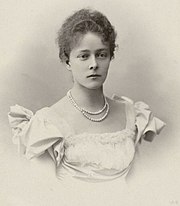Design
Design
Personality
Chart Properties
Your Cross represents the specific theme of your life. This cross embodies your unique potential & the lessons you're here to learn, providing a roadmap to fulfilling your life purpose.
We use the UTC birth time and date to do the calculations required to generate your Human Design chart.
Buy Tokens
Pay as you use, no expiry and no subscription required.Prompt Ideas
Get inspired with some epic prompt ideas.Amrita Sher-Gill's Biography
Eminent Indian painter, aughter of Umrao Singh Sher-Gil Majithia, a Sikh aristocrat and a scholar in Sanskrit and Persian, and Marie Antoniette Gottesmann, a Hungarian-Jewish opera singer. She spent most of early childhood in Budapest. She was the niece of Indologist Ervin Baktay. He guided her by critiquing her work and gave her an academic foundation to grow on. He also instructed her to use servants as models. In 1921, her family moved to Summer Hill, Shimla in India. Though she was already painting since the age of five she formally started learning painting at age eight.
In 1923, her mother Marie came to know an Italian sculptor, who was living at Shimla at the time. In 1924, when he returned to Italy, she too moved there along with Amrita and got her enrolled at Santa Annunziata, an art school at Florence. Though Amrita didn’t stay at this school for long, and returned to India in 1924, it was here that she was exposed to works of Italian masters.
At sixteen, Sher-Gil sailed to Europe with her mother to train as a painter at Paris, first at the Grande Chaumiere under Pierre Vaillant and Lucien Simon and later at École des Beaux-Arts (1930–34). Her early paintings display a significant influence of the Western modes of painting, especially as practiced in the Bohemian circles of Paris in the early 1930s. In 1932, she made her first important work, Young Girls, which led to her election as an Associate of the Grand Salon in Paris in 1933, making her the youngest ever and the only Asian to have received this recognition.
In 1934, back in India, she began a quest for the rediscovery of the traditions of Indian art which was to continue till her death. In May 1935 in Shimla Amrita met the English journalist Malcolm Muggeridge, then working as Assistant Editor and leader writer for the Calcutta Statesman. Both Malcolm and Amrita stayed at the family home at Summer Hill, Shimla and a short intense affair took place during which she painted a casual portrait of her new lover, the painting now with the National Gallery in New Delhi. By September 1935 Amrita was seeing Muggeridge off as he travelled back to England for new employment, the parting timely and no doubt of relief to them both. She left herself for travel in 1936 at the behest of an art collector and critic, Karl Khandalavala, who encouraged her to pursue her passion for discovering her Indian roots.
Sher-Gil married her Hungarian first cousin, Dr. Victor Egan in 1938 and moved with him to India to stay at her paternal family’s home in Saraya in Gorakhpur, Uttar Pradesh.
Although from a family that was closely tied to the British Raj, Amrita herself was a Congress sympathiser. She was attracted to the poor, distressed and the deprived and her paintings of Indian villagers and women are a meditative reflection of their condition. She was also attracted by Gandhi’s philosophy and lifestyle. Nehru was charmed by her beauty and talent and when he went to Gorakhpur in October 1940, he visited her at Saraya. Her paintings were at one stage even considered for use in the Congress propaganda for village reconstruction.
In September 1941, Victor and Amrita moved to Lahore, then in undivided India and a major cultural and artistic centre.
In 1941, just days before the opening of her first major solo show in Lahore, she became seriously ill and slipped into a coma. She later died around midnight on 6 December 1941, leaving behind a large volume of work. The reason for her death has never been ascertained. A failed abortion and subsequent peritonitis have been suggested as possible causes for her death. Her mother accused her doctor husband Victor of having murdered her. However, the day after her death Britain declared war on Hungary and Victor was sent to jail as a national enemy. Amrita was cremated on 7 December 1941 at Lahore.
Link to Wikipedia biography
Your Cross represents the specific theme of your life. This cross embodies your unique potential & the lessons you're here to learn, providing a roadmap to fulfilling your life purpose.
We use the UTC birth time and date to do the calculations required to generate your Human Design chart.


Grand Duke of Tuscany Ferdinando IV
3/5 Emotional - Solar Plexus Manifesting GeneratorJacques Parisot
2/5 Emotional - Solar Plexus Manifesting Generator

Candy Spelling
5/1 Emotional - Solar Plexus Manifesting Generator

Duchess in Bavaria Sophie Adelheid
4 / 1 Sacral Generator

Henryk Maria Fukier
3/5 Emotional - Solar Plexus Manifestor





